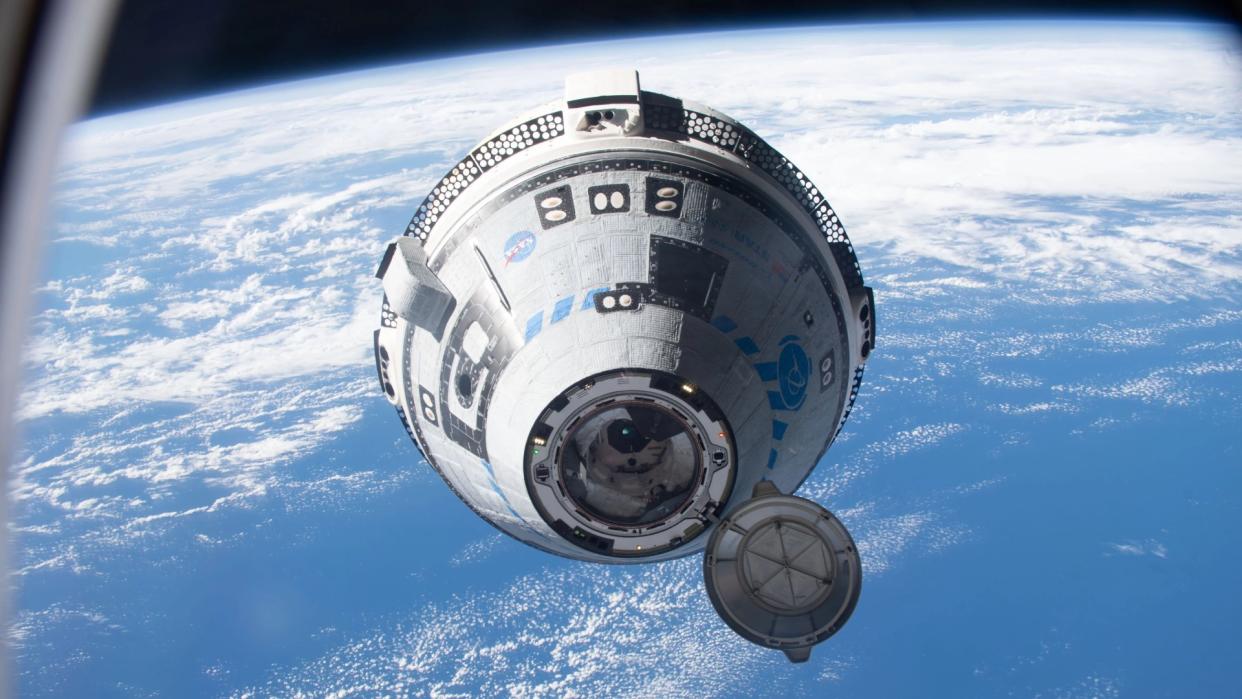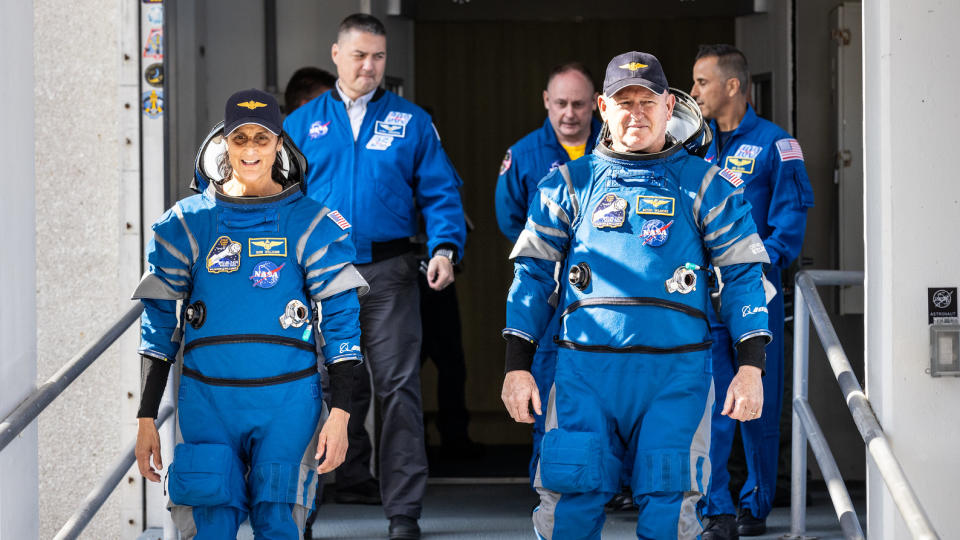Boeing's Starliner is a 'big piece of America's overall strategy for access to low Earth orbit,' astronaut says

CAPE CANAVERAL, FLORIDA — Starliner will send its first astronaut crew to space as early as Monday (May 6), and Mission Control plans one last big test to get ready for the event.
NASA and Boeing Starliner officials worked together at the government agency's Johnson Space Center in Houston on an hours-long prelaunch test on Sunday (May 5). A NASA team in Mission Control took control of Starliner, just like during the real event, and simulated a countdown all the way to liftoff.
"This is a big weekend for NASA … and it's not just because we're putting our friends on it on a new spaceship," Canadian Space Agency astronaut Josh Kutryk told Space.com in a phone interview from nearby the press center here. He is assigned to the crucial capcom (capsule communicator) position as the United Launch Alliance Atlas V spacecraft flies towards Earth orbit.
Related: Watch ULA assemble Atlas V rocket ahead of Boeing Starliner astronaut test flight (video)
"This is important strategically," Kutryk added, noting the approximately 10-day-long CFT aims to certify a second commercial spacecraft to bring NASA astronauts regularly to the International Space Station (ISS). "This is the second big piece of America's overall strategy for access to low Earth orbit after implementing [SpaceX's] Dragon."
The mission is manifested to launch on Monday at 10:34 p.m. EDT (0234 GMT Tuesday, May 7) from the nearby Cape Canaveral Space Force Station, at United Launch Alliance's Pad 41.
Crew Flight Test (CFT) astronaut crew Suni Williams and Butch Wilmore will be the first NASA astronauts and humans aboard Starliner, as well as the Atlas V rocket.
On April 26, the CFT crew — both former U.S. Navy test pilots as well — joined Mission Control in doing another prelaunch test in which the crew donned suits, walked out from quarantine here at the NASA Kennedy Space Center and went all the way to their launch pad at the nearby Cape Canaveral Space Force Station.
The CFT astronauts won't be joining them this time, as they have other tasks to turn to ahead of ascent. But Kutryk's presence is notable: not only is he capcom during CFT's launch, but he is also one the astronauts aboard the first operational six-month spacecraft mission, Starliner-1, set to launch to the ISS no earlier than 2025.
During Sunday's launch simulation exercise, "We'll do a series of test items where we're basically putting power on to the Atlas V and Starliner stack on Pad 41," Kutryk said. "We're looking into some of these systems, testing the comm system, for example, and just making sure we're all completely ready to go."
After spending all day on console practicing on Sunday, the launching team will return to the White Flight Control Room at JSC around 4 p.m. EDT (2000 GMT) on Monday for the big event. "It's super exciting," Kutryk said of the launch. That's because NASA will be managing a launch from JSC and White Flight for the first time since the space shuttle program concluded in 2011. (SpaceX manages its own launches from an independent center in Hawthorne, California.)
Shortly after arriving, the team will take control of the vehicle from Boeing and go through system power-ups and fueling. Whitmore and Wilmore will make their way to the pad and get strapped in roughly three hours before launch, too.

"I'll be talking to them [the crew], talking to their personnel who are strapping them in, making sure that the complex systems are working, and also that all this simple stuff is working," Kutryk said. "You'll hear us talking about, 'Can you reach this? Can you reach that? And we'll be doing pressure checks on the vehicle, pressure checks on the suits. Hundreds of pages of technical verification procedures."
Through launch, part of what the team will monitor is whether they need to abort at several sites in the Atlantic Ocean. Assuming all goes to plan, Starliner will be authorized to do an orbital insertion engine burn about roughly 31 minutes after launch. Kutryk said that moment will be "really critical for the whole mission" because it will put the astronauts in a "sustainable, safe orbit. After that, we have a lot more options, a lot more flexibility, a lot more time to deal with anything … that's really the job of this ascent team."
Assuming all is going well at that point, the ascent team will then hand over their Mission Control positions to another team. Kutryk will remain on call for the rest of the mission and naturally, will begin shifting focus even more to Starliner-1 as that launch date approaches in 2021. Starliner-1 commander Mike Fincke, of NASA, is backup to the CFT astronauts and is quarantining with the CFT crew until launch. Also on Starliner-1 is NASA's Scott Tingle.
Related Stories:
— 2 astronaut taxis: Why NASA wants both Boeing's Starliner and SpaceX's Dragon
— Boeing's Starliner crew capsule channels R2-D2 ahead of astronaut test flight
— NASA, Boeing delay Starliner capsule's 1st astronaut launch to early May
Kurtyk said the next Starliner mission will include a new physical capsule that is inside the Boeing building right now: "It looks very much ready to go," he said. The crew has fully certified themselves for ISS operations, allowing themselves to focus on remaining Starliner-1 tasks in the coming months.
Starliner's program is taking a "build-up" approach, to use the lingo of flight testing, that is gradually shifting from uncrewed missions to CFT and then to Starliner-1. (Starliner required two uncrewed missions after software glitches on the first attempt in 2019 stranded the spacecraft in the wrong orbit and it did not reach the ISS. But the second attempt in 2022 made it well.)
Assuming CFT certifies as planned, "that changes the calculus, it changes the discussion around a lot of risk items, around a lot of system items," Kurtyk said. Redesigned software is coming that allows future crews to dock at more ports than a single one at the ISS Harmony module, which is the case right now. The crew will also want to ensure that Starliner can power down for months at the ISS, instead of the few days CFT requires.
